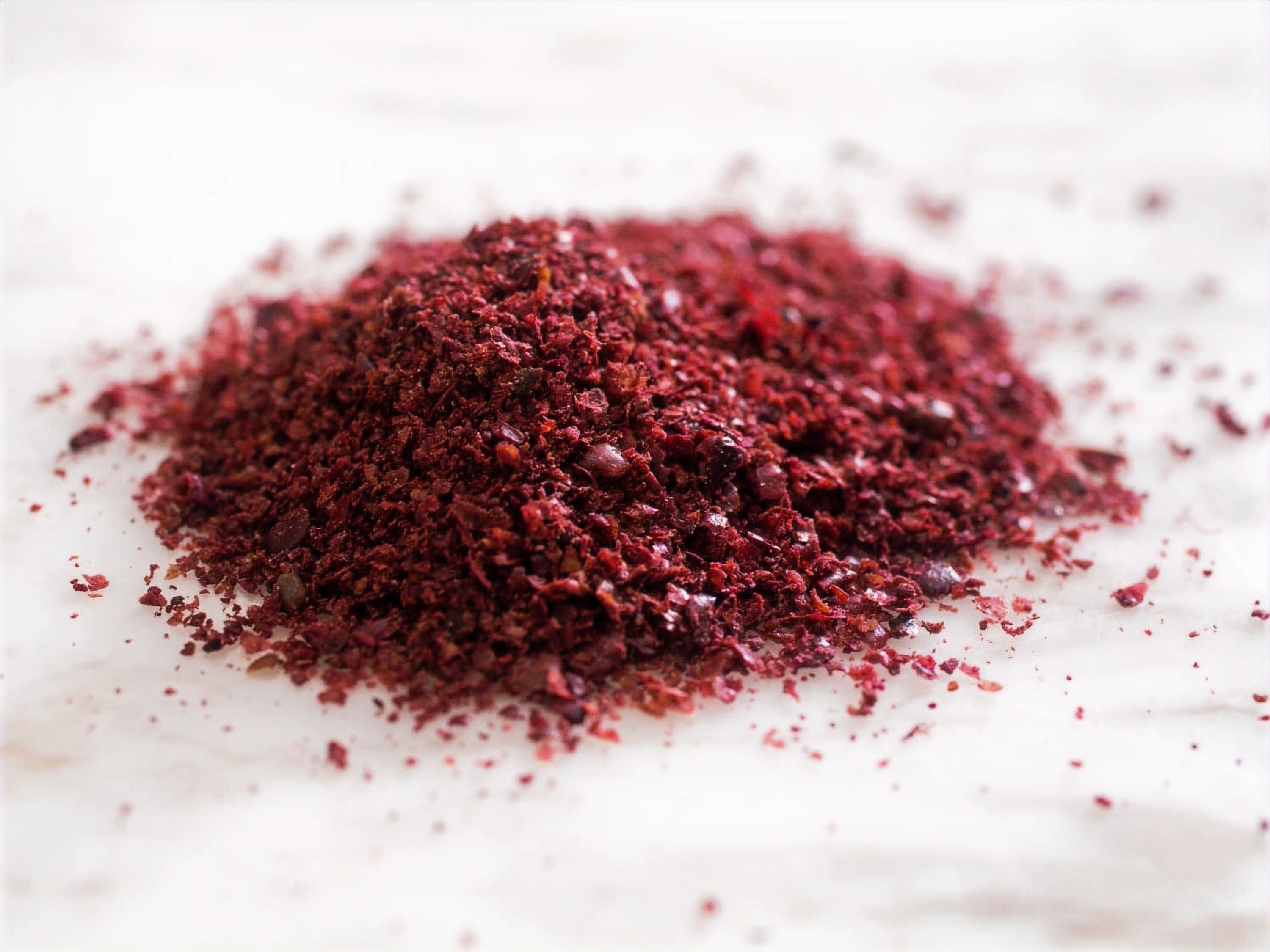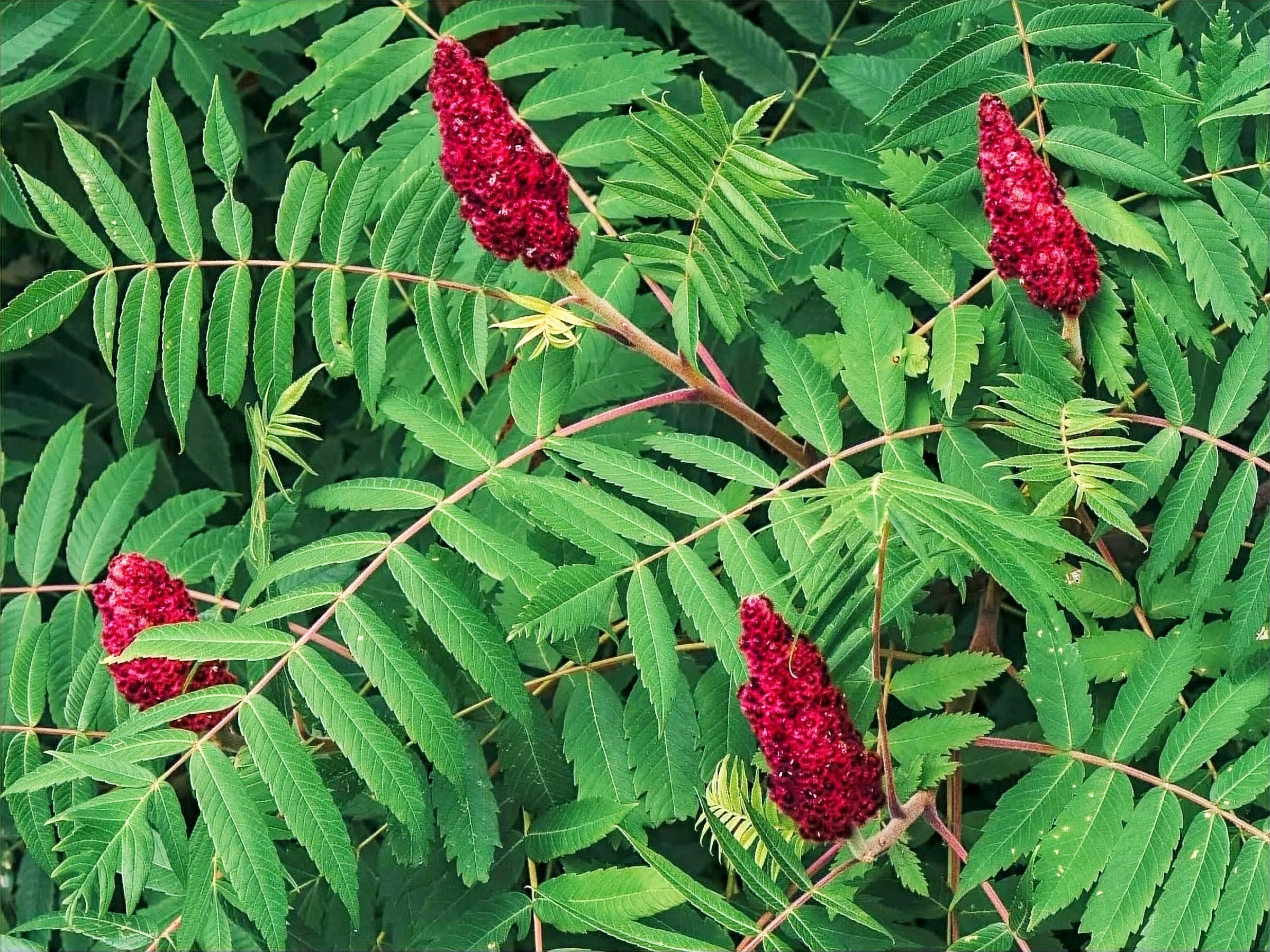
Sumac and its Tasty Tanginess
Tangy, lemony, and slightly fruity, sumac adds bright, aromatic flavour to dishes. Perfect for salads, meats, rice, and spice blends, it’s a versatile Middle Eastern staple.
Table of content
What does sumac taste like?
What are the main types of sumac?
How is sumac used in cooking?
What foods pair well with sumac?
How do you store sumac?
Sumac
Origanum Vulgare
What is Sumac?
Sumac is a vibrant spice made from dried and ground berries of the sumac shrub.
It is a key ingredient in Middle Eastern and Mediterranean cooking, adding a tart, citrusy flavour to salads, meats, rice dishes, and spice blends such as za’atar.
Unlike lemon juice or vinegar, sumac provides a subtle, aromatic acidity without liquid, making it versatile in both dry rubs and cooked dishes.
Traditionally, sumac has also been used for its antioxidant properties and refreshing, palate-brightening qualities. Its deep red colour and tangy flavour make it both visually and culinarily appealing.

Facts about Sumac
Flavour & Taste
Sumac has a tangy, citrus-like flavour with subtle fruity undertones and gentle astringency. Its vibrant red colour and refreshing acidity make it ideal for sprinkling over salads, seasoning meats, or blending into spice mixes like za’atar.
Where Does Sumac Come From?
Sumac is native to the Middle East and Mediterranean regions. It is now cultivated in countries such as Turkey, Lebanon, Syria, Iran, and parts of North Africa. The shrub grows best in dry, rocky soil with plenty of sunlight.
Popular Varieties of Sumac
Crimson sumac
Deep red berries, the most common culinary type.
Smooth sumac
Slightly milder, sometimes used for spice blends.
Sicilian sumac
Known for its tart, fruity flavour in Mediterranean cuisine.

FAQ
What does sumac taste like?
Sumac is tangy, lemony, and slightly fruity, with a mild astringent quality that adds bright acidity to dishes.
What are the main types of sumac?
Common varieties include crimson sumac (deep red, most culinary use), smooth sumac (milder, for spice blends), and Sicilian sumac (tart, fruity, Mediterranean flavour).
How is sumac used in cooking?
Use sumac as a sprinkle over salads, meats, rice dishes, or in spice blends like za’atar. It adds acidity and colour without using lemon juice or vinegar.
What foods pair well with sumac?
Sumac pairs well with chicken, lamb, rice, vegetables, olive oil, and fresh herbs, adding tartness and brightening the overall dish.
How do you store sumac?
Store sumac in an airtight container away from heat and sunlight to preserve its vibrant colour and flavour.

Recipe Idea
Sumac Lemon Rice
Cook 1 cup of rice as usual. Stir in 1–2 tsp sumac, a squeeze of lemon juice, a drizzle of olive oil, and salt to taste.
Fluff and serve warm for a tangy, aromatic side.
